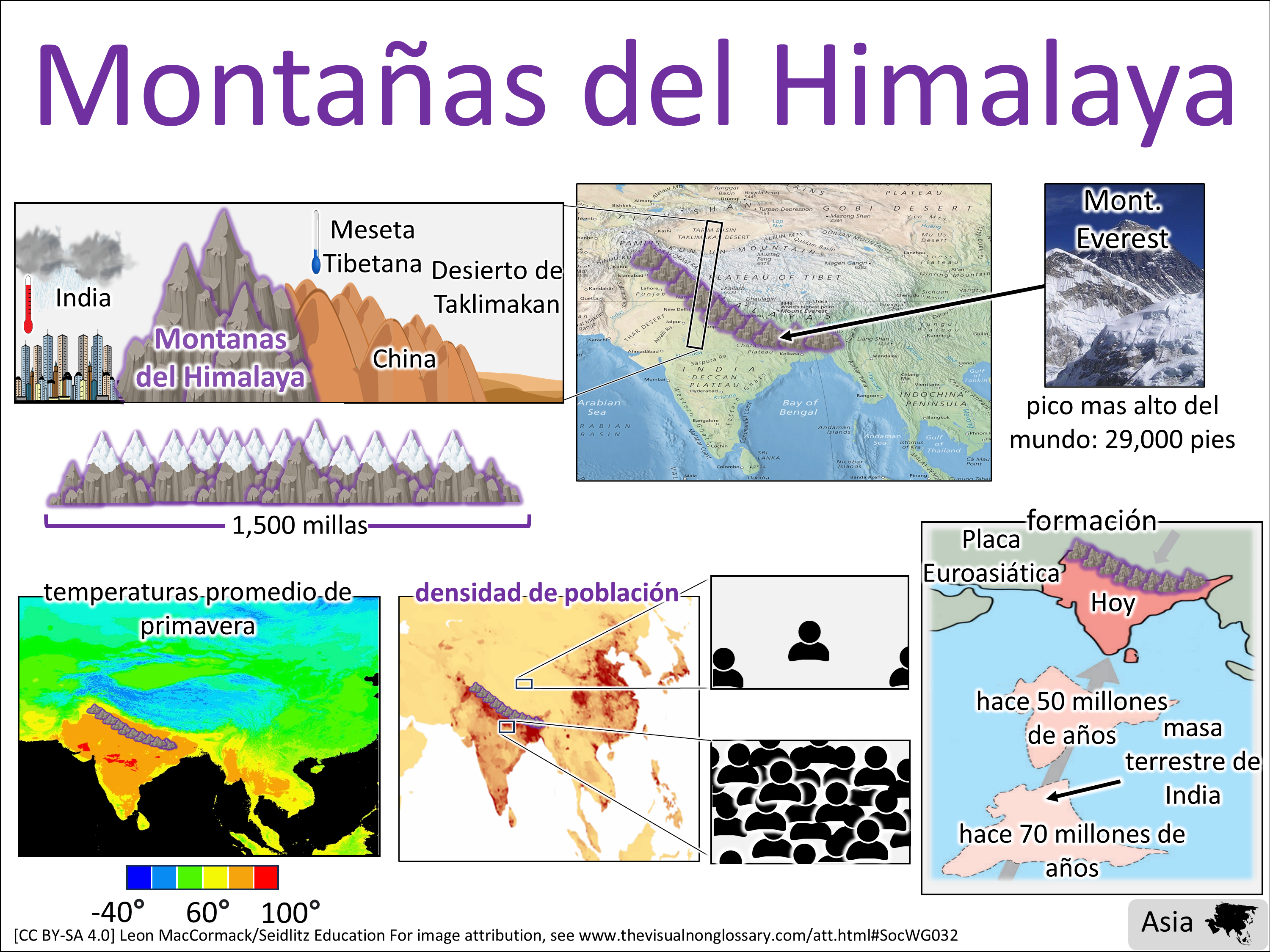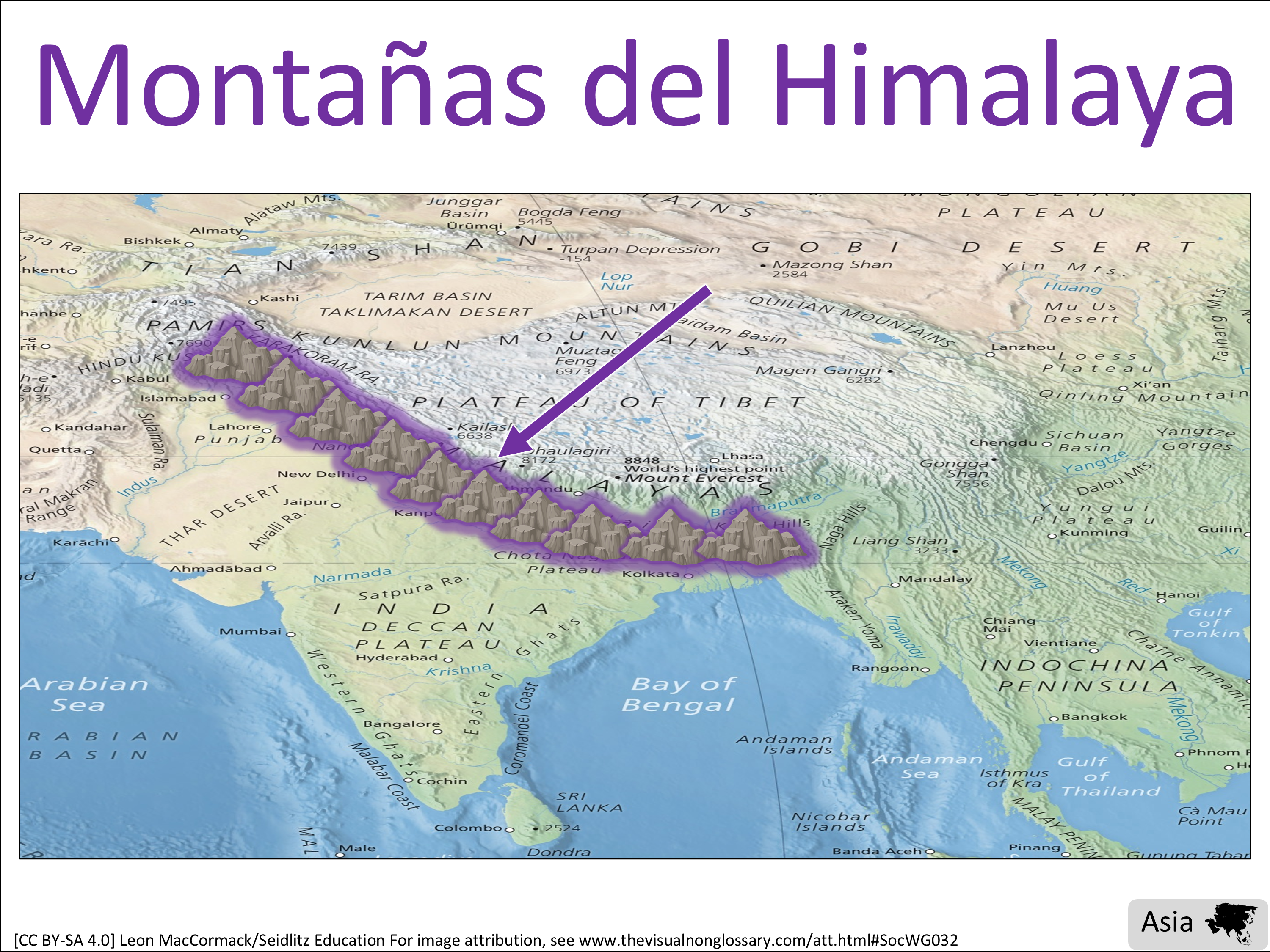Montañas del Himalaya: Geografía del mundo 🌐 View in English
Geography
Geography
Vertical Alignment
TEKS:
| 6th | 6.3(C), 6.4(A), 6.4(B) |
| World Geo | WG.3(B) WG.4(A) WG.4(B) WG.6(A) |
Linked To
Downloads
- Visual
- Word wall visual
- Lesson Plan
- Lesson Materials
Structured Conversation Questions
Observational
¿Qué son las Montañas del Himalaya?
Las Montañas del Himalaya son...Relational
¿Cómo están relacionadas las Montañas del Himalaya con las barreras montañosas?
Las Montañas del Himalaya están relacionadas con las barreras montañosas porque...Inferential
¿Cómo crees que las Montañas del Himalaya impactan la densidad de población en Asia?
Creo que las Montañas del Himalaya impactan la densidad de población en Asia porque...
Please log in to comment.
Students might notice in this visual:
- Las Montañas del Himalaya están ubicadas entre India y China
- Las montañas se extienden por 1,500 millas a lo largo de Asia
- El Monte Everest es parte del Himalaya y es el pico más alto del mundo
- Las montañas se formaron donde la masa terrestre de India chocó con la Placa Euroasiática
- Hay diferencias climáticas a cada lado de las montañas — más cálido y húmedo al sur, más frío y seco al norte
EXTENDING THE DISCUSSION
After the observational question, randomly call on one or more students to share what they or their partner answered. Then ask the class, “Did anyone notice…?” using the suggestions above or anything else you’ve noticed.
After the observational question, randomly call on one or more students to share what they or their partner answered. Then ask the class, “Did anyone notice…?” using the suggestions above or anything else you’ve noticed.
Students might wonder:
- ¿Por qué menos personas viven cerca del Himalaya?
- ¿Cómo afectan las Montañas del Himalaya la temperatura y la precipitación?
- ¿Qué hace que el Monte Everest sea el pico más alto?
- ¿Por qué colisionaron las placas tectónicas en esta región?
- ¿Cómo afectan las barreras montañosas al clima en Asia?
EXTENDING THE DISCUSSION
After students have shared what they notice, ask the class, “Did anyone wonder…?” using the suggestions above or anything else you might think is interesting or relevant to the lesson.
After students have shared what they notice, ask the class, “Did anyone wonder…?” using the suggestions above or anything else you might think is interesting or relevant to the lesson.
Example student responses
To the observational question, ¿Qué son las Montañas del Himalaya?
LOW-LEVEL
Las Montañas del Himalaya son montañas altas en Asia con picos nevados y el Monte Everest.
HIGH-LEVEL
Las Montañas del Himalaya son una cadena montañosa enorme formada por fuerzas tectónicas entre las placas de India y Eurasia, que influye en el clima y la distribución de la población en Asia.
RESPONDING TO RESPONSES
Emphasize and celebrate each student’s use of the key vocabulary to support a culture of “no wrong answers.”
Emphasize and celebrate each student’s use of the key vocabulary to support a culture of “no wrong answers.”



